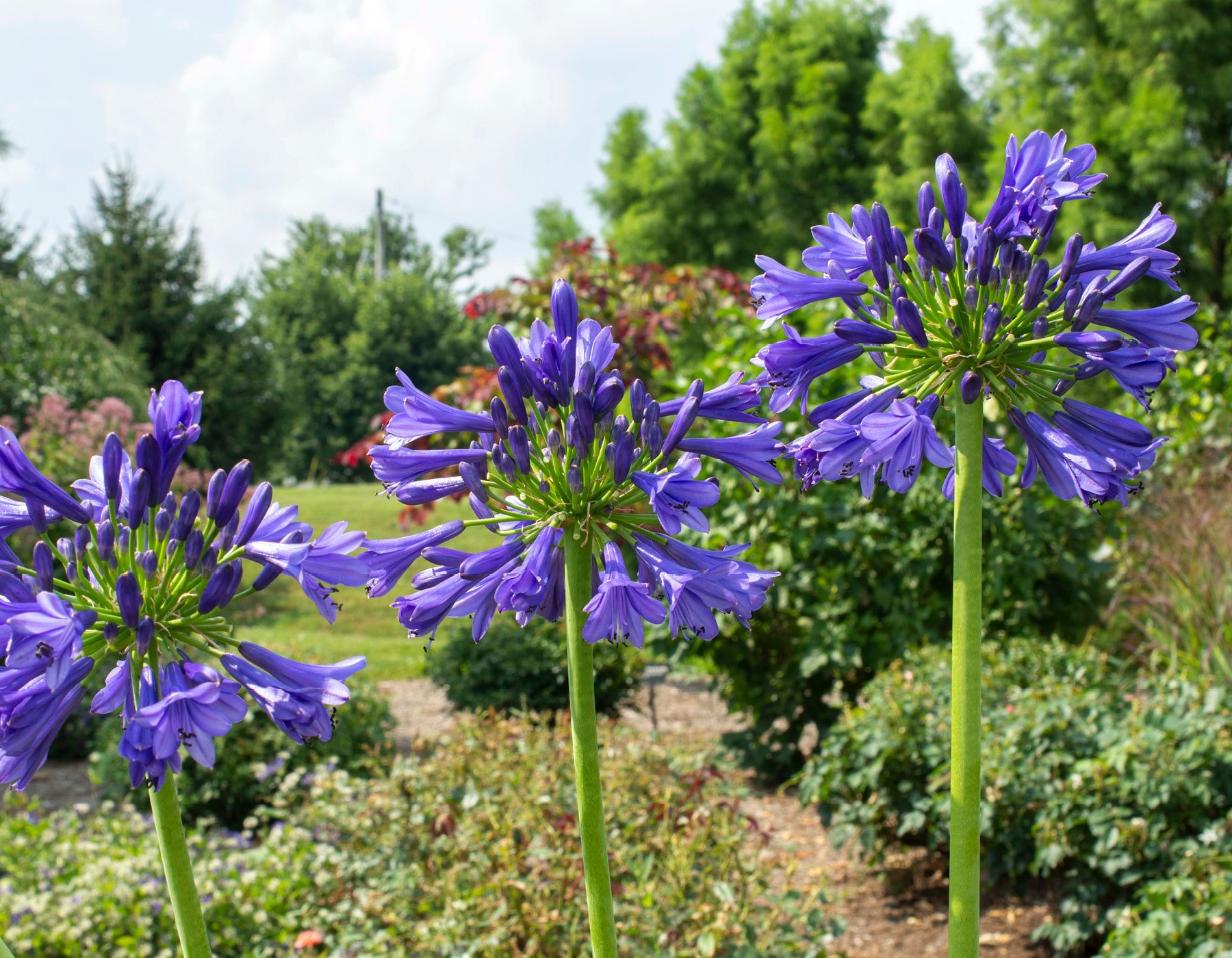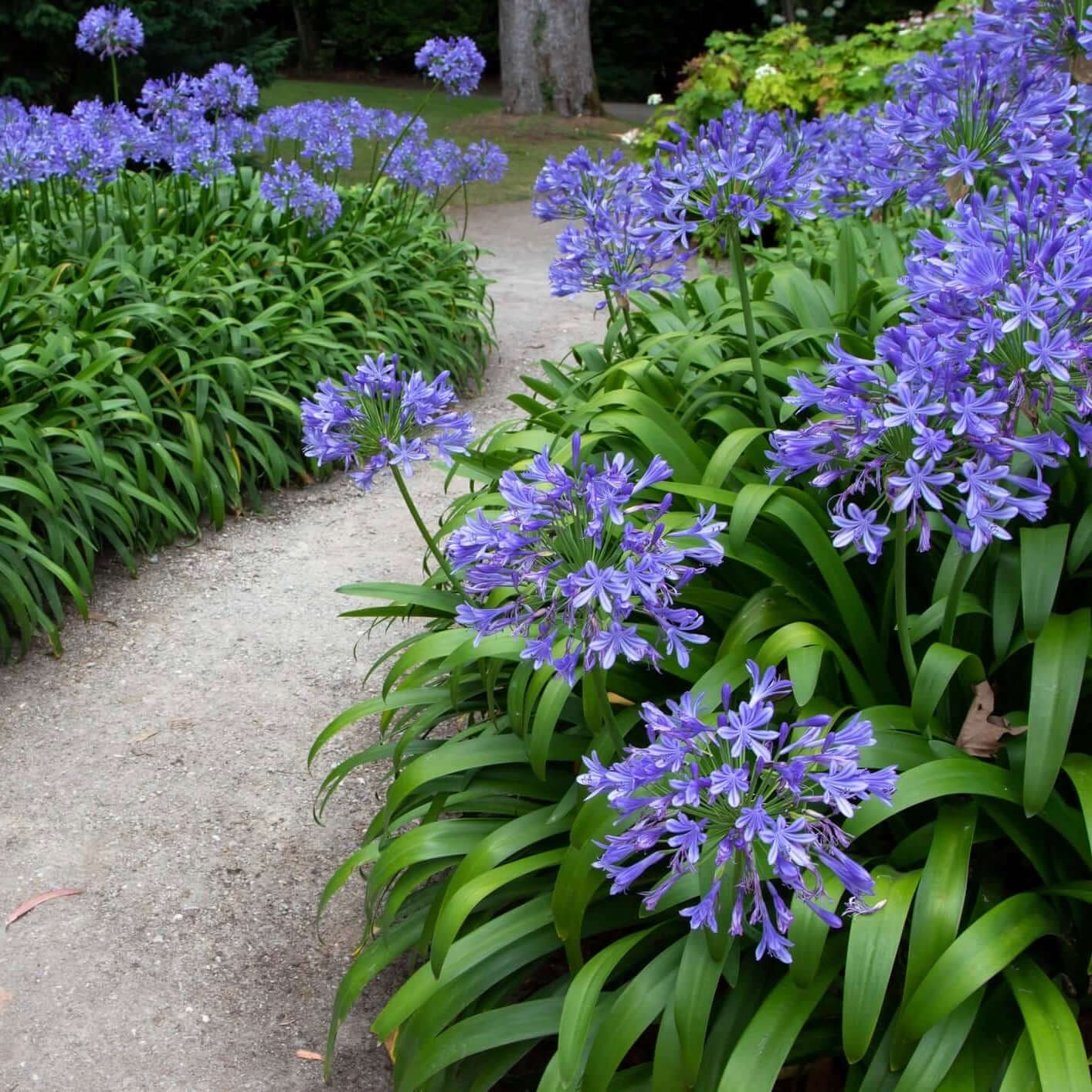Agapanthus Varieties: Picking the most effective for Your Landscape
Agapanthus Varieties: Picking the most effective for Your Landscape
Blog Article
Letting Loose the Secret to Successful Agapanthus Cultivation: Tips and Techniques for a Flourishing Yard
In the world of gardening, growing agapanthus effectively requires a critical technique that includes various elements of plant care. By recognizing the subtleties of agapanthus cultivation, one can develop an atmosphere where these plants thrive and grow generously.
Growing Agapanthus: Finest Practices
When planting Agapanthus, correct soil prep work is vital for ensuring effective growth and advancement of these gorgeous blossoms. Agapanthus, commonly referred to as Lily of the Nile or African lily, flourishes in well-draining soil with a somewhat acidic to neutral pH level - Agapanthus. Before growing, it is crucial to change hefty clay dirts with raw material such as garden compost or peat moss to enhance drainage and offer necessary nutrients for the plants
To grow Agapanthus, select an area that gets complete sunshine to partial color, as this will certainly advertise healthy growth and plentiful blooming. Dig an opening two times the size of the plant's origin round and put the Agapanthus at the very same deepness it was previously growing. Gently backfill the hole with soil, weighing down securely to get rid of any air pockets around the roots.
Water the recently grown Agapanthus completely and remain to maintain the dirt evenly damp, especially during the plant's active expanding period. Agapanthus. Using a well balanced fertilizer once a month can even more sustain the plant's development and flowering. By complying with these finest techniques for growing Agapanthus, you can develop a stunning display screen of these exciting blossoms in your yard
Ideal Soil Conditions for Agapanthus
For optimal development and flowering success of Agapanthus plants, guaranteeing the soil problems are ideal is critical. Agapanthus chooses soil that is abundant in nutrients, so including a well balanced fertilizer throughout the growing period can promote healthy and balanced development and dynamic blooms.

Watering and Fertilizing Tips
To guarantee healthy growth and vivid blossoms, appropriate watering and fertilizing techniques are important for successful Agapanthus farming. Agapanthus plants profit from routine watering, especially throughout the expanding season.
When it concerns fertilizing Agapanthus, a well balanced fertilizer with equal parts nitrogen, phosphorus, and potassium can be applied in the springtime to promote healthy and balanced development and flowering. Slow-release fertilizers are excellent for supplying nutrients progressively over an extended period. Prevent over-fertilizing, as this can bring about too much vegetation growth at the expense of blooms.
Furthermore, incorporating raw material like compost into the dirt can boost nutrient degrees and enhance dirt structure, aiding in the total health and wellness of the Agapanthus plants. By following these watering and feeding pointers, garden enthusiasts can ensure their Agapanthus plants thrive and create sensational displays of blossoms.
Trimming and Deadheading Techniques
Correct pruning and deadheading methods play an essential function in maintaining the health and wellness and aesthetic appeals of Agapanthus plants, complementing the necessary practices of watering and fertilizing for effective cultivation. Trimming Agapanthus entails removing invested blossom heads, yellowing or dead leaves, and general shaping of the plant to useful link advertise better growth. Deadheading, the procedure of getting rid of faded flowers, not only improves the plant's look but likewise urges additional growing.
When deadheading Agapanthus, it is suggested to snip off the flower stem at the base utilizing sharp, tidy shears. This procedure reroutes the plant's power from seed production back into root and foliage growth, advertising a much healthier and extra durable plant. Regular deadheading can extend the flowering period of Agapanthus and stop self-seeding, which can bring about congestion.
In terms of pruning, Agapanthus normally benefits from a light trim after blossoming to clean up the plant and motivate fresh growth. Cutting back the spent blossom stems and getting rid of any kind of dead or broken vegetation assists maintain the plant's vigor and total look. Nevertheless, it is important to stay clear of reducing right into the crown of the plant, as this can deteriorate its health and wellness.

Protecting Agapanthus From Vermins and Diseases
Executing effective pest and disease monitoring approaches is important to securing the health and wellness and vigor of Agapanthus plants in growing. Agapanthus are generally hardy plants, yet they can still go to this site succumb various parasites and conditions if not properly looked after. One typical pest that influences Agapanthus is the Agapanthus borer, a caterpillar that tunnels right into the plant, triggering damages to the flowers and fallen leaves. To avoid invasions, regular inspection of the plants is crucial. If borers are found, they can be manually gotten rid of, or insecticidal soap can be used as a control action.
In enhancement to bugs, Agapanthus are prone to illness such as root rot and fungal leaf spots. By remaining cautious and resolving parasite and illness problems quickly, gardeners can help their Agapanthus grow and prosper.

Final Thought
In verdict, successful cultivation of agapanthus needs correct planting strategies, optimal dirt conditions, ample watering and fertilizing, routine trimming and deadheading, and protection from parasites and diseases. By adhering to these methods and pointers, gardeners can make sure a prospering garden full of beautiful agapanthus blooms. Agapanthus. Keep in mind to keep regular care and attention to detail to promote the health and wellness and longevity of these magnificent plants
When growing Agapanthus, proper soil preparation is vital for making sure effective development and growth of these attractive flowers.Water the newly planted Agapanthus thoroughly and continue to keep the dirt evenly moist, especially during the plant's energetic expanding period.For optimum development and growing success of Agapanthus plants, making certain the dirt problems are suitable is vital. When hair transplanting or planting Agapanthus, guarantee the soil is well-prepared to offer the required foundation for the see post plants to establish themselves efficiently. One usual bug that impacts Agapanthus is the Agapanthus borer, a caterpillar that tunnels into the plant, causing damages to the leaves and flowers.
Report this page